Related Research Articles
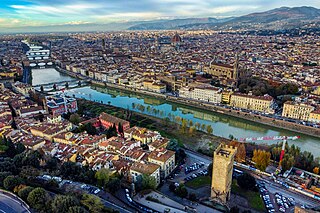
Florence is the capital city of the Italian region of Tuscany. It is also the most populated city in Tuscany, with 360,930 inhabitants in 2023, and 984,991 in its metropolitan area.
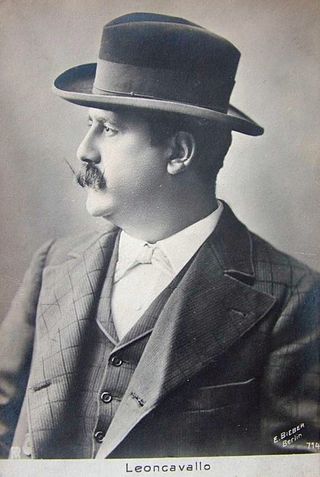
Ruggero Leoncavallo was an Italian opera composer and librettist. Although he produced numerous operas and songs throughout his career it is his opera Pagliacci (1892) that remained his lasting contribution, despite attempts to escape the shadow of his greatest success.
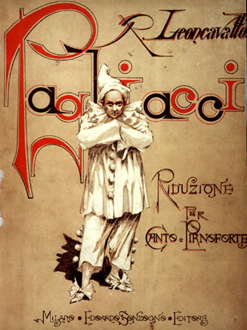
Pagliacci is an Italian opera in a prologue and two acts, with music and libretto by Ruggero Leoncavallo. The opera tells the tale of Canio, actor and leader of a commedia dell'arte theatrical company, who murders his wife Nedda and her lover Silvio on stage during a performance. Pagliacci premiered at the Teatro Dal Verme in Milan on 21 May 1892, conducted by Arturo Toscanini, with Adelina Stehle as Nedda, Fiorello Giraud as Canio, Victor Maurel as Tonio, and Mario Ancona as Silvio. Soon after its Italian premiere, the opera played in London and in New York. Pagliacci is the best-known of Leoncavallo's ten operas and remains a staple of the repertoire.

The University of Florence is an Italian public research university located in Florence, Italy. It comprises 12 schools and has around 50,000 students enrolled.

Filippo Maria Visconti was duke of Milan from 1412 to 1447. Known to be cruel and paranoid, but shrewd as a ruler, he went to war in the 1420s with Romagna, Florence and Venice in the Wars in Lombardy, but was eventually forced to accept peace under Pope Martin V. He would return to the offensive again where another peace agreement was required to end the fighting. He married twice, the second in 1428 to Marie, daughter of his ally Amadeus VIII. When he died, he was the last of the Visconti male line and was succeeded by Francesco Sforza, husband to his daughter.

Alessandro D'Ancona was an Italian critic and writer.

Giuseppe Gazzaniga was a member of the Neapolitan school of opera composers. He composed fifty-one operas and is considered to be one of the last Italian opera buffa composers.

The House of Corsini is the name of an old and influential Italian princely family, originally from Florence, whose members were elected to many important political and ecclesiastical positions, including that of a Pope.

Il viaggio a Reims, ossia L'albergo del giglio d'oro is an operatic dramma giocoso, originally performed in three acts, by Gioachino Rossini to an Italian libretto by Luigi Balocchi, based in part on the 1807 novel Corinne ou l'Italie by Germaine de Staël.
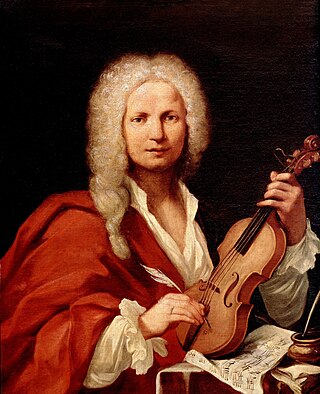
Tito Manlio is an opera in three acts by Antonio Vivaldi, to a libretto by Matteo Noris. It was written in celebration of the marriage of Philip of Hesse-Darmstadt (1671–1736), the governor of Mantua, which he had announced at Christmas. Vivaldi quickly composed the opera within five days. Whereas the wedding eventually did not take place at all, the opera was successfully premiered at the Teatro Arciducale ‘detto il Comico’ in Mantua during the carnival season of 1719.
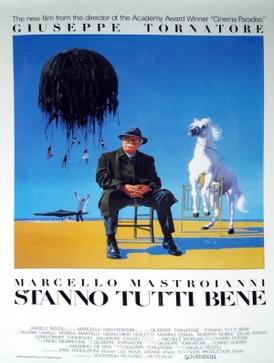
Everybody's Fine is a 1990 Italian drama film directed by Giuseppe Tornatore who co-wrote the screenplay with Tonino Guerra and Massimo De Rita.
La falena is a leggenda or opera in three acts by composer Antonio Smareglia with an Italian libretto by Silvio Benco. The opera premiered at the Teatro Rossini in Venice on 6 September 1897.
Emilio Usiglio was an Italian composer and conductor.
Matteo Sansone may refer to:
Matteo Sansone (1916–1992) was born in Monte Sant'Angelo, Italy. He was educated as a pharmacist but described himself as "an archaeologist out of passion". He is known for his archaeological work in the Gargano region in Apulia, Italy.
People with the surname Sansone:
Carolina Uccelli (1810–1885) was an Italian composer known for opera.

Agnese Landini is an Italian teacher, wife of former Prime Minister of Italy Matteo Renzi.
Roberto Conti was an Italian mathematician, who contributed to the theory of ordinary differential equations and the development of the comparison method.
"La Lupa" is a short story by Sicilian writer Giovanni Verga, first published in 1880.
References
- ↑ La romanza italiana da salotto by Francesco Sanvitale
- ↑ NYU in Florence, "Matteo Sansone"